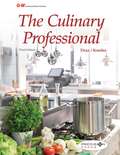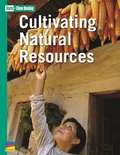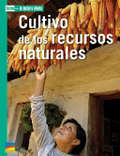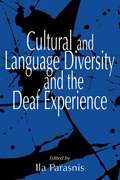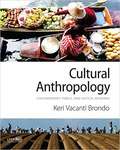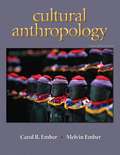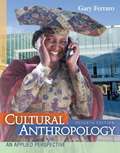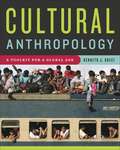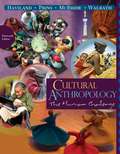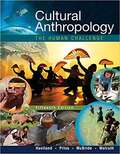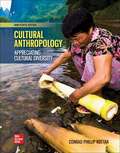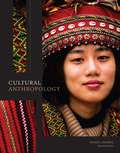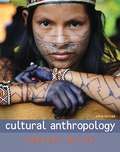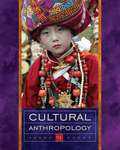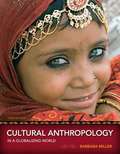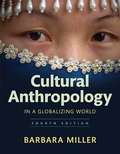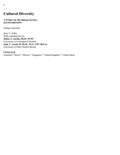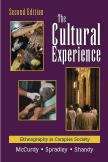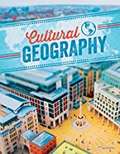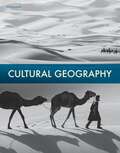- Table View
- List View
The Culinary Professional (Third Edition)
by John Draz Christopher KoetkeThe Culinary Professional is the first step on the path to a career in the culinary field. It will provide you with the necessary skills for more advanced class work and expose you to the world of professional cooking. The foodservice industry, which employs most culinary professionals, is large and diverse. This text begins with an introduction to that industry's opportunities and challenges. You will learn what it takes to succeed in this growing field. Before you begin to cook, you should know how to be safe in the kitchen. Early chapters will explain how to protect your health and safety as well as that of your coworkers and customers. You will learn how to find a job and what is expected of you as an employee. A new chapter explores concepts and practices that promote sustainability in the kitchen. Chefs use many tools and select from an immense array of ingredients when preparing dishes. The Culinary Professional supplies a generous number of photos and clear descriptions of the tools and ingredients used in the professional kitchen. Step-by-step directions for basic culinary skills and cooking methods appear throughout the text. The presentation of your food is nearly as important as the preparation, and for this reason, a full chapter covers the principles of plating, design, and garnishing. A new chapter explains how to analyze cuisines and explores various international cuisines. Successful chefs must be able to do more than simply prepare delicious dishes. You will learn about the importance of working with other departments and managing resources. Welcome to the first step on your path to a career in culinary!
Cultivating Natural Resources: Unit One
by Benchmark Education CompanyNIMAC-sourced textbook <p>Grade 5</p>
Cultivo de los recursos naturales: Textos Para La Lectura Atenta (Texts Close Reading Ser.)
by Benchmark Education Co.NIMAC-sourced textbook
Cultural and Language Diversity and the Deaf Experience
by Ila ParasnisThis edited volume provides a comprehensive analysis of deaf people as a culturally and linguistically distinct minority group within American society. Many educators, linguists, and researchers now favor this position, as opposed to that which states that a deaf person simply has an audiological disability. Contributors to this book include members of the deaf community, as well as prominent deaf and hearing educators and researchers. The text contains three sections, covering research on bilingualism and biculturalism, the impact of cultural and language diversity on the deaf experience, and first-hand accounts from deaf community members that highlight the emotional impact of living in the deaf and hearing worlds.
Cultural Anthropology: Contemporary, Public And Critical Readings
by Keri BrondoCultural Anthropology: Contemporary, Public, and Critical Readings helps students think anthropologically by introducing core concepts through engaging case studies. The majority of selections are contemporary pieces from public, critical, and applied anthropology. These timely readings will generate discussion among students regarding the value of an anthropological perspective in the modern world. While the selections represent a range of geographic and cultural areas, the book includes a high number of U.S.-based fieldwork examples so that students are inspired to think anthropologically "in their own backyards." Several case studies offer examples of anthropology in action, and special features throughout the text profile anthropological application through news stories ("In the News") and interviews ("Anthropology in Practice").
Cultural Anthropology
by Carol R. Ember Melvin R. EmberCultural Anthropology,provides both a comprehensive and scientific introduction to cultural anthropology. It helps the reader understand how humans vary culturally and why they got to be that way. This new edition also highlights migration and immigration in the context of globalization.
Cultural Anthropology: An Applied Perspective
by Gary FerraroExplore cultural anthropology in an applied and fascinating way with Gary Ferraro's CULTURAL ANTHROPOLOGY: AN APPLIED PERSPECTIVE. This contemporary and student-relevant text gives you all the key material you need for your introductory course, plus it will show you that anthropology is for you! With real world applications of the principles and practices of anthropology, this book will help you learn to appreciate other cultures as well as your own. Apply what you learn in this course to those situations that you are likely to encounter in your personal and professional life. What can you do with anthropology today? Check out the real-life examples of cross-cultural misunderstandings and issues (in our popular "Cross-Cultural Miscues" features) to view 'culture at work. ' Also, the book takes a look at specialized vocabularies as illustrated by "chickspeak" (the language of single, urban, upwardly mobile women), the war in Iraq, environmental degradation, and other contemporary topics.
Cultural Anthropology: A Toolkit for A Global Age
by Kenneth J. GuestInspires students to think like anthropologists in a multicultural and global age.Covering the essential concepts that drive cultural anthropology today, Ken Guest's Cultural Anthropology: A Toolkit for a Global Age shows students that now, more than ever, global forces affect local culture and that the tools of cultural anthropology are essential to living in a global society. A "toolkit" approach encourages students to pay attention to big questions raised by anthropologists, offers study tools to remind readers what concepts are important, and shows them why it all matters in the real world.
Cultural Anthropology: The Human Challenge
by William A. Haviland Harald E. L. Prins Bunny McbrideExplore the most fascinating, creative, dangerous, and complex species alive today: you and your neighbors in the global village. With compelling photos, engaging examples, and select studies by anthropologists in far-flung places, the authors of CULTURAL ANTHROPOLOGY: THE HUMAN CHALLENGE provide a holistic view of anthropology to help you make sense of today's world. With this text you will discover the different ways humans face the challenge of existence, the connection between biology and culture in the shaping of human beliefs and behavior, and the impact of globalization on peoples and cultures around the world.
Cultural Anthropology: The Human Challenge (Mindtap Course List Series)
by William A. Haviland Harald E. L. Prins WalrathExplore the most fascinating, creative, dangerous, and complex species alive today: you and your neighbors in the global village. With compelling photos, engaging examples, and select studies by anthropologists in far-flung places, the authors of CULTURAL ANTHROPOLOGY: THE HUMAN CHALLENGE, 15th Edition, provide a holistic view of anthropology to help you make sense of today's world. <p><p> With this text, you will discover the different ways humans face the challenge of existence, the connection between biology and culture in the shaping of human beliefs and behavior, and the impact of globalization on peoples and cultures around the world. It comes with MindTap, a digital interactive learning platform with an array of tools and apps from video clips to notetaking and flashcards, which will enliven your study and help you achieve better grades.
Cultural Anthropology: Appreciating Cultural Diversity
by Conrad Phillip KottakCultural Anthropology offers an up-to-date holistic introduction to anthropology from the four-field perspective. Key themes of appreciating the experiences students bring to the classroom, appreciating human diversity, and appreciating the field of anthropology are showcased throughout the text. The program presents anthropology’s core concepts and also demonstrates anthropology’s relevance to the 21st-century world we inhabit. Revisions to the 18th edition of Cultural Anthropology were extensively informed by student data, collected anonymously by McGraw-Hill’s adaptive learning system. Connect is the integrated learning system that empowers students by continuously adapting to deliver precisely what they need, when they need it, and how they need it, so that your class time is more engaging and effective.
Cultural Anthropology: Appreciating Cultural Diversity
by Conrad Phillip KottakThis book is an introduction to sociocultural anthropology, also covering linguistic and applied anthropology. While presenting cultural anthropology's core concepts and topics, the text also aims to demonstrate anthropology's relevance to the 21st-century world we inhabit. The subtitle of the text reflects its goal of instilling a sense of appreciation: (1) of cultural diversity, (2) of cultural anthropology as a field, and (3) of how an anthropological approach can build on, and help make sense of, the experience that students bring to the classroom.
Cultural Anthropology (11th Edition)
by Serena Nanda Richard WarmsBuild your awareness of cultures around the world with CULTURAL ANTHROPOLOGY, 11th Edition! Emphasizing the issues of power, gender, globalization, stratification, ethnicity, and the similarities and differences among all cultures, this book enables you to explore the diversity of human life and lifestyles, and will prompt you to think deeply about the world in which you live. Available with InfoTrac#65533; Student Collections http://gocengage. com/infotrac.
Cultural Anthropology (6th edition)
by Barbara MillerSuccessfully integrating attention to culture change, gender, class, race, ethnicity, and the environment, Barbara Miller's Cultural Anthropology engages students with compelling ethnographic examples, and demonstrates the relevance of anthropology in today's world.
Cultural Anthropology (9th edition)
by Serena Nanda Richard L. WarmsThis book continues to bring you excellent coverage of cultures from around the world. The text also continues to emphasize issues of gender, stratification, ethnicity, globalization, and contemporary issues.
Cultural Anthropology in a Globalizing World (Third Edition)
by Barbara D. MillerSuccessfully integrating attention to globalization, gender, class, race and ethnicity, and the environment, this text engages students with compelling ethnographic examples and by demonstrating the relevance of anthropology.
Cultural Anthropology In A Globalizing World
by Bárbara MillerCultural Anthropology in a Globalizing World presents a brief, balanced introduction to the world's cultures, focusing on how they interact and change. Author Barbara Miller encourages students to think critically about other cultures as well as their own, and offers frequent opportunities to engage deeply with key concepts. Featuring the latest research and statistics throughout, the Fourth Edition has been updated with contemporary examples of anthropology in action, addressing recent newsworthy events such as the Ebola epidemic.
Cultural Diversity: A Primer for the Human Services (Mindtap Course List Series)
by Jerry V. DillerAuthor Jerry Diller's practical text offers you a balance of clinical and theoretical information, focusing on effective methods of providing cross-cultural services. <p><p>CULTURAL DIVERSITY: A PRIMER FOR THE HUMAN SERVICES, 6th Edition, covers the general principles of cultural diversity, the process of cross-cultural service delivery and cultural information on specific client populations. You'll also find practical clinical suggestions and cautions through interviews with professionals from different ethnic backgrounds. Finally, you'll gain a better understanding of your own prejudices so that you can be a more effective counselor when working with clients from different cultures.
The Cultural Experience: Ethnography In Complex Society
by James Spradley David McCurdy Dianna ShandyThe Cultural Experience has helped generations of undergraduates discover the excitement of ethnographic research through participation in relatively familiar cultures in North American society. Grounded in the interviewing-based ethnographic technique known as ethnosemantics, the latest edition continues to treat ethnography as a discovery process. Students are taught how to set up an ethnographic field study, choose a microculture, and find and approach an informant, as well as how to ask ethnographic questions, record data, and organize and analyze what they have learned. Detailed instruction on how to write an ethnography is also provided. The guidelines are followed by ten short but substantive, well-written student ethnographies on such microcultures as exotic dancing, firefighting, pest extermination, and the work of midwives and police detectives. <p><p> The Second Edition of this popular classroom volume has been expanded to include boxed inserts that offer suggestions to aid in the research process, new material on how to use observation and narratives with the ethnosemantic approach, greater emphasis on how to find cultural themes and adaptive challenges by analyzing ethnographic field data, and more extensive strategies for writing the final ethnographic paper. The latest edition also presents an expanded treatment of ethical responsibilities as well as a discussion of the significance of ethnographic research and its applications in the workplace.
Cultural Geography
by Dennis BollingerThe textbook provides a survey of geographic principles through a regional approach. Beginning in North America, students will "travel" from continent to continent around the world studying the geography, cultures, land forms, climates, resources, economy, religions, and government of each country. This new edition features a new opening chapter and is filled with photographs, charts, maps, and first-person accounts that make this "virtual world tour" an exciting and stimulating exploration of world geography and culture. - Publisher
Cultural Geography
by Bju PressCultural Geography Student Edition, 5th edition will take the students around the world, starting with physical geography, the earth's climate, and the people of the world. The first four units progress from North and South America and then on to Europe and Russia. Unit five will cover Africa and then units six and seven will cover Asia. The book will conclude in unit eight with Oceania and Antarctica. 600 pages, softcover. Grade 9.
Cultural Geography (3rd Edition)
by Michael D. MatthewsCultural Geography contains many aspects of geography that will make one more aware of their connection to geography and how it influences them, their actions, and their interactions with others. Christian textbook.
The Cultural Landscape: An Introduction to Human Geography
by James RubensteinTrusted for its timeliness, readability, and sound pedagogy, The Cultural Landscape: An Introduction to Human Geography emphasizes the relevance of geographic concepts to human problems. The relationship between globalization and cultural diversity is woven throughout; Rubenstein addresses these themes with a clear organization and presentation that engages students and appeals to instructors. The Eleventh Edition focuses on issues of access and inequality to discuss negative trends (such as the economic downturn, depleting resources, and human-caused climate change) as well as positive steps taken (sustainability, technology, regime change, women’s rights, and more).
